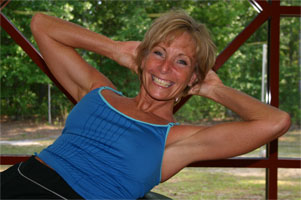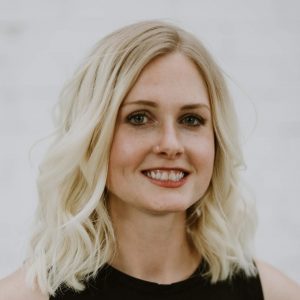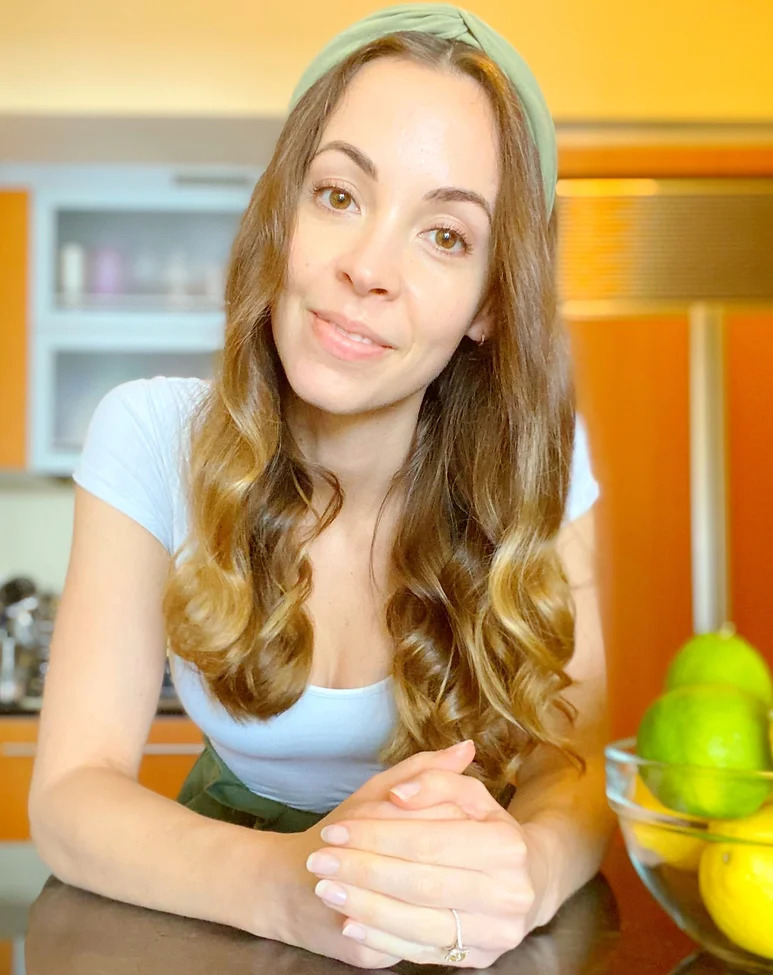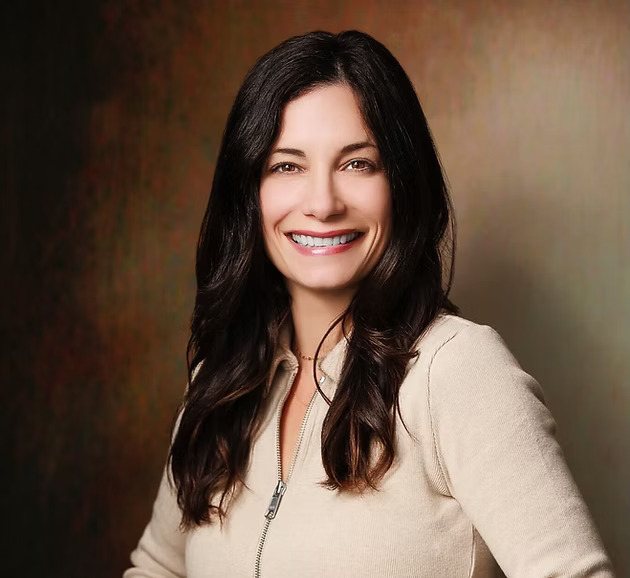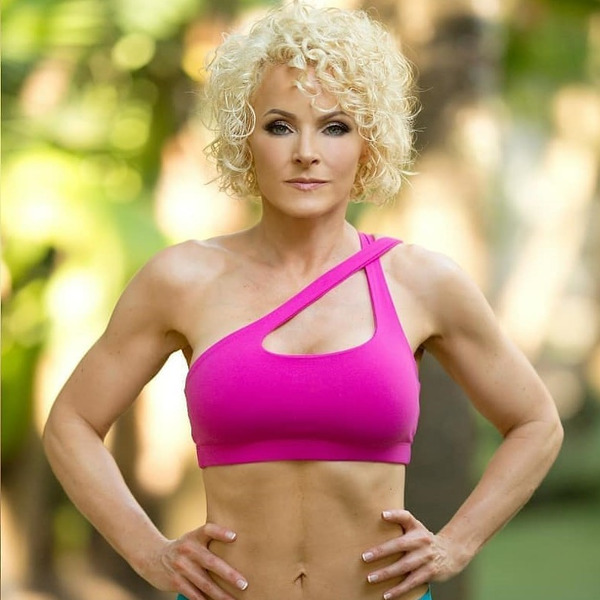
Senior Fitness 101 – Carrie Smith
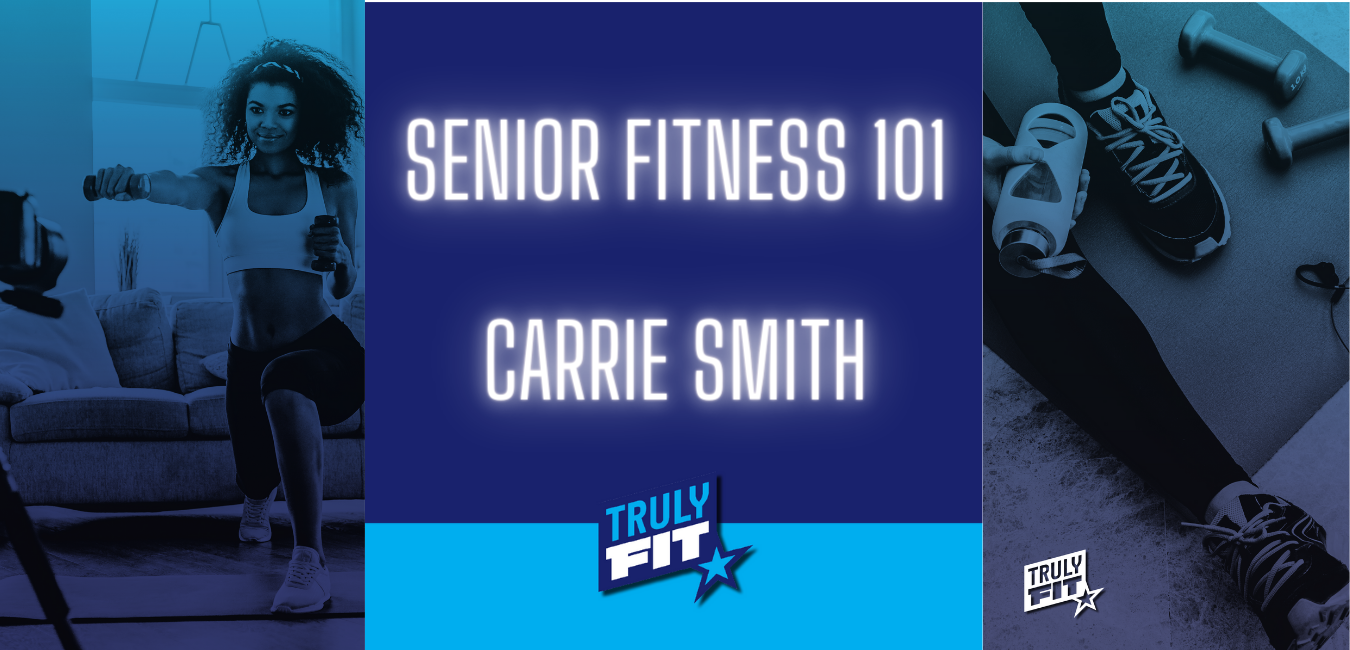
Guest: Carrie Smith
Release Date: 02/13/2021
Welcome to TrulyFit the online fitness marketplace connecting pros and clients through unique fitness business software.
Steve Washuta: Welcome to the TrulyFit podcast. I’m your host, Steve Washuta, co-founder of TrulyFit and author of Fitness Business 101. Today we have a really great one for you. Senior fitness, what is senior fitness? What are the differences in working with senior populations? What are the advantages or disadvantages? I have a great guest coming on to discuss this. Nobody’s better informed than Carrie Smith. She is a mentor and friend of mine and will be discussing senior fitness.
Carrie has been in the fitness industry for close to 40 years. She has done everything worked at big clubs and small private facilities. She has done private group training, personal training and group fitness of all sorts. She’s also been a presenter, traveling presenter for certifications, you name it, she has done it in the industry. I’m excited to pass along some great information to trainers and fitness professionals who are not that knowledgeable in the area of senior fitness. Not only from a business standpoint but also from just providing a high-value experience for your clients. In this case, for your senior fitness clients in particular. Without further ado, Carrie Smith.
Welcome, Carrie Smith to the TrulyFit podcast. I already gave you a long-winded introduction. So we won’t go into that. We’ll just jump right into it here. Is there? I know it sounds pretty obvious senior fitness. But is there a definition of senior fitness?
Carrie Smith: Well, hi, Steve. Thank you for having me. Well, yes and no. The word senior is a lot of times people don’t like that for a variety of reasons. But one thing I can say about seeing your fitness is that you can’t say one thing about it. It’s way too very, there are so many different aspects of it. When you’re dealing with people that have aged, there’s a wide variety of abilities and diseases and disorders. So you just can’t say any one thing when you’re dealing with a senior fitness population.
Steve Washuta: That makes sense, and obviously, you and I both have an extensive background working with senior fitness. I have people who were in their 60’s and appear to be 85, and people who are 85, who appear to be 65. So there’s certainly a wide range of people, and you can’t group them all into one category. I do think the main component of working with seniors is understanding modifications. Knowing the different exercises to do with those in senior fitness. Can you speak a little bit about having a good grasp on modifications?
Carrie Smith: Sure! Yeah, so what you’re asking is senior fitness training any different than training, the younger population or other people, children, for instance? It isn’t different biomechanically. The body still works the same, you still have flexion-extension, you still have the muscles contracting, basic concepts. So you still have all of that. But you have genetics, you have lifestyle, diseases like I mentioned before. The best and most important thing in my mind is to have some type of sit-down console health history. Really getting into where the person was, where they are now, what they want to do, where they want to go before you even get into exercises and modifications.
I think it’s a huge error to work with anybody past 50, before having an in-depth consultation. What medicines they’re taking, what accidents they’ve had, what body parts are replaced, etc.
Steve Washuta: That’s a great point. I think, obviously, consultations, and health history are important. It’s even more so with the senior fitness population. Number one, they typically have more issues, and number two, they’ve just experienced life longer. So they’re going to have a longer list. I’ve run into that many times. I’ve had people who were seniors who didn’t tell me about an ankle break. Why? Well, that they had a 25, and because it was 40 years ago they assumed it didn’t matter. It mattered.
Carrie Smith: Right. So it matters a lot. So you have to be like a journalist, almost like a news reporter. You really have to dig. And I’m the same way I’ve had people forget to tell me about a heart attack. You know, it was 10 years ago. Well, you know, thank you. You really have to dig and then we also really have to understand, and I’ve learned I’ve taken tons of certifications. I’ve taught certifications and workshops, but the place that I learned is out on the floor training because every time I train anybody but mainly senior fitness. I learned something new or am forced to learn something new and research and, and then I also have to understand that there are areas that are way out of my area of expertise.
I have a little box of creativity, where I can modify exercises and work with clients. But I have to understand where those lines and limits are, and then network outside of those. If I run into something that I don’t think is in my area of expertise, then I’ll consult with a physical therapist or urologist, etc. I’ll find out where and what and how maybe they’ve got here. Then then I can get back in my box and be creative and not hurt them.
Steve Washuta: Agreed, deferring to the experts is certainly important. I don’t know if I ever told you this story. At some point, early on in my career, I found out the hard way.
I was working with someone who had a hip replacement, but this was the old-school way. As you know, they cut you posteriorly in the past and they weren’t done very well. We were getting done with a Pilates session we were going through somewhat I would consider basic stretches, and her hip popped out. I heard a hissing sound as if, like, your tire was going out of air and then popped it back in. You know, she was a little bit sore, but I guess this is it’s happened before to her. It was a bad way to learn. That you can’t do particular stretches with people who have had their hips replaced. Nonetheless, you’re certainly right, we learn on the floor, and there’s no better way.
Carrie Smith: What I would trainers or other instructors, which I have done with other trainers, I just tell them that the number one thing to consider is safety. You absolutely have to have a margin of safety. I see on the floor examples of trainers working with elderly clients and trying to train them in balance and having absolutely no margin for error. A little 100-pound trainer and a 200-pound man, and they’re walking along over things and there’s no margin. So if the person falls, they’re both going down and there’s going to be an injury. So that type of stuff in a safety, safety, safety, safety, and then you learn.
Steve Washuta: Yes, that’s a good point. Obviously with senior fitness even more so with that safety, because that we know, the statistics of one bad fall for a senior could, you know, could very well mean that the end is coming too soon. Because now they are in a wheelchair, now they’re getting even more deconditioned. Now they have no exercise abilities, and it spirals down quickly. That snowball effect as opposed to you know, you’re working with an 18-year-old, you push it a little bit too much. He has to take a rest for three days, obviously not as big of a deal.
Carrie Smith: Not life-changing, not like with a senior. You watched me have my fall in the gym, and I ended up for a year and a half dealing with shoulder issues because I didn’t make it over the hurdle. Even from an experiential point of view, a fall can be life-changing, that can be a big deal. So anything working with trainers, obviously, you’re going to work on balance and strength with balance. You have to be extremely careful.
Steve Washuta: Well, I think we might be scaring some people away from working with senior fitness. Let’s do a quick 180 here, and talk about the advantages and the interesting parts of working with seniors that people may not understand.
Carrie Smith: Okay, well, first of all, don’t let me scare anybody away. It’s probably one of the best training as I’ve been doing this for over 35 years. So, that has been the best experience in the last 10 to 12 years working with an older population. As I have aged and in my experience from working, you know, in the younger group and working on up it’s been enriching, it’s been exciting. It’s been fun. And never, never a dull moment. I don’t want to discourage anybody. I just would don’t want anybody to go in with their eyes not wide open.
The benefits, of course, is we have a huge population of, we call them boomers. They are working through our culture right now. It is a huge population, and they have the time because most of them are either retired or working part-time. They have the resources, many of them, and they have the desire. So, they’re not restricted to late night or early morning as the working crowd.
They don’t have children that they need to get to school or the child’s sick. There’s a lot of education out there, so they’re not going to be able to do the things they want to do it whether it’s gardening or playing tennis, or hiking. Those three things make it super financially beneficial. Fun. I really love it.
Steve Washuta: Yes, I think that’s, that is all on target. I can’t tell you how many seniors, in particular, have come to me after a doctor’s appointment and they said; Hey, listen, my doctor said x,y,z I have osteopenia, or that due to pre-existing heart conditions, I need to start exercising more. So on and so forth. You’re getting people who are motivated by health and who also have the finances to go ahead and put forth the effort and energy and they have the time.
If you’re working with retirees, obviously they have the time to, to work with you. Even multiple times a week, most of the younger population that I worked with, sought me out for one particular day. They might have even said, Hey, Steve, I need a half-hour for you and just push me in my core push me in my legs. However, the older population will say, hey, I want to work with you four days a week.
Carrie Smith: Yes, absolutely, and time is a crucial element. Otherwise, there’s only so much time in the day. If you are stuck in a niche where you only have morning hours or late evening hours, then the chances of being financially stable in this line of work are limited. This with this population, and possibly doing group fitness or group Personal Training, why you can really make a nice living.
Steve Washuta: Now, I want to move towards talking about private group training, which some people also call small group training, which is essentially a personalized session of training with a limited number of participants. You do consultations on the front end, and you treat them more like a personal training session. But ultimately, it is in a class environment. I know that you have one in particular called WOW, that you run. I believe and I’m sure that you do as well that these are actually almost best suited for senior fitness really cling to these. Can you talk a little bit about WOW and private group training?
Carrie Smith: So that has been the biggest eye-opener for me, I do women on weights, which is essentially a women-only group.. Then there’s another group here, I will go into my women on weights a moment. But there’s another group here of men only, and we didn’t call it men on weights because that would have been Mao and that’s kind of weird. The people here got together and creatively came up with the word STUDS. Strength training under direction. They’re adorable. They walk around with a shirt on that has a bicep on it that says “I’m a stud”. They are just amazing, and they love it.
However, the approach with them is different, the women versus the men approach is extremely different. Back to the women on weights, what I have found is I, of course, I have a consultation, I understand just as if I’m doing personal training. Then I take a limited amount, they pay a larger fee, it’s between personal training and a group fitness class. So it’s not as expensive as personal training, but it’s still a good bit.
So then once they’re in the group, I make sure that when I create I know exactly who’s coming when I create the workout. I make sure, like we talked about earlier, that there are modifications that are for the ones that need it and accentuated exercises for the ones that are more advanced but in the same setting. So when I’ve tried to show other trainers how to do a group personal training for senior fitness, it turns into essentially a boot camp. That’s not what it is at all. It is a group personal training that is highly scheduled highly planned and it works out really well.
The benefit is the social aspect, the women thrive on it, they end up coming to hang out with each other exercise almost becomes secondary. If you facilitate that social element with the women, you got a hit on your hands. I keep them all in one room. I have tried to work them through the club and go into this area and that area, and it’s like herding cats. So I get very creative in that one room with lots of different equipment to keep them energized to keep them interested. But I don’t let them leave the room without a bodyguard or at least a chaperone.
We have found that the men, and this is a generalization it’s not meant to define all men, but the men that are in the STUD group tend to do the same things over and over again when they come to the gym. They go to this machine, that cardio, and that and then they leave and they’ve done that for years. So the girl that does STUDS gets them out of their box. She takes them to the pool she takes them to the TRX suspension trainers, she takes them to Pilates. For the men, it was different. It’s not as social, but it is trying to push them out of their box and into new areas so that their bodies respond. Because you know, if you do the same thing over and over again, you’re going to get the same results.
Steve Washuta: That’s great info and great insight there. I want to touch on what you said about the social aspect, which is so important. I think people overlook that aspect. Obviously, now, things are a little bit different due to the pandemic. But let’s just go ahead and talk about you know, pre-pandemic and hopefully what post-pandemic will look like, although obviously, things are most likely changed forever. But the social aspect is even more important with the seniors and any chance to get the plug my book I will.
In Fitness Business 101, I talk about two different teaching styles. One is called demonstrative, and that’s more of the social trainer and one’s called direct. The direct is maybe the guy who understands the kinesiology better, but he can’t really connect with the clients as well. It’s important to have that, that ability to connect with your clients and in senior fitness because it’s not as if their goals are to run 100 meters and be a sprinter.
\ They’re not going to be trying to make the high school football team, they are trying to simply stay healthy, right? You need to understand the basics. You also have to provide that high-value experience for them. They want to go there, they want to talk with their friends, they want to have the ability to socialize while understanding they’re working with someone who cares about their safety and understands the modifications.
Carrie Smith: Bingo. Absolutely. You’re right, they’re not trying to try out for something and their goals are more general. It’s important we remember we talked about the consultation and learn what they have done in their lives, what has happened to them, what they enjoy, where they are now and what they want to do. I’ve worked with clients who are getting ready to go skiing with their son, and preparing for something like that is way different. I work with clients who want to be able to get up and down off the floor and play with their grandkids without having needing help. So those are two very different goals. But if you know, you can work in that direction with them knowing what they want.
Again, it goes back to you can’t say one thing about him because a lot of people in there I have a lady if you don’t mind me using an anecdotal story, she is 79 years old, she weighs probably 100 pounds soaking wet. She’s from Minnesota. And she literally does Rows with 30-pound dumbbells, bent over rows, and only because we don’t have a 35 pounder in there, she’s crazy. She does TRX. She does planks in the TRX with her feet in there, she’s just a monster. But it’s not as if she was always like that it took me 12 years to take it from using little pink one-pound weights to that.
Everyone has a different approach and a different reason for being there. I have found that the one thing that does ring through the whole crowd, that does come to the group personal training is they just enjoy each other. They try to enjoy me and they find you know, I find I share some personal aspects of my life. They know my grandkids’ names, they like to see the pictures, I see their grandkids, well you know, all of that stuff. We know each other’s husbands’ names and all that makes a difference.
I actually know that I can’t remember all this stuff, so I keep a little chart where they can’t see it. I’m writing down different things. Right, enter it on my phone. Dan’s husband’s name is Bill, Bill had surgery two weeks ago. I know that so when she comes into the room, I glanced at that, and I can say hey, Jen, how’s Bill? How is this surgery? I’m not gonna remember that stuff. But that’s that personal touch that makes the world of difference. So I will give that little piece of advice if you can, really can’t remember the dog’s name and that they, you know, had whatever, it does make a difference.
Steve Washuta: That’s fantastic advice and brings me to a story of my own that just happened about an hour ago, I mentor some young trainers. One girl in particular, who’s still in college, was talking to me earlier. She was nervous about not knowing all the underactive and overactive muscles when she was working with this particular client. I just have to reassure her, it’s more important that you remember the client’s child’s name than knowing their right, you can see what your client doesn’t know them all either, and your client was in her late 50s and was just looking for overall health and wellness.
For some of the young trainers out there who just get done with reading the books, it’s important you remember you’re not a physical therapist, right? You’re not just there to make corrections, you’re there to connections. You are there to build an experience and build a relationship with your client. Understanding that the kinesiology aspect will come with time,
Carrie Smith: Certainly agree Steve.
Steve Washuta: There is no wasted time when building relationships. If you waste that time, if you don’t do that, you’re going to lose the client.
Carrie Smith: That’s what personal the personal part of personal training, knowing, and understanding that you do need to develop a relationship, but also knowing where the lines and limits are in that. Yes, you’re not like best friends. Although I have become very good friends with a lot of my clients. You do develop into knowing their kids, knowing about them, knowing again, where they’ve been. If you can impart that on to the younger trainers, it is important. It’s important to know the biomechanics. It is important to know overactive and underactive and all of that. But like you said, I’m not a physical therapist.
That’s when I have somebody alignment issues or things that need to be corrected, and it’s out of my wheelhouse. I will consult with a physical therapist, recommend that they go to the physical therapist for a while. Then I get a sheet of exercises back when they come back. It is wonderful, and it’s out of my hands and into the expert’s hands. And then when they come back to me, we can get creative again. And I’ve done that 1000s of times over the years.
Steve Washuta: Yes, and to finish off, I’m sure you would echo the sentiments. Another advantage to working with the older population or you know, the senior fitness population is it really expedites your learning because you get to see various injuries. You have to start to be creative in your approach to fitness. Whereas if you’re only training 23-year-old young moms, you can pretty much do the same things over and over.
Obviously, you’re not going to put a 67-year-old woman with bilateral hip replacements and COPD, into a burpee. So, you know, how do we work those same muscles, right, what do we do? What are the modifications that I can do? I think I think having a few older clients, as a young trainer is important because you have to learn how to be creative and think through those processes. You won’t be challenged if you only have younger clients.
Carrie Smith: You’re absolutely right, it might be easier to just train the younger population. It’s not going to be financially sound, I don’t believe and it’s also not going to be educational at all. So having a few if not in one-to-one in the middle of it or whatever. Just getting some experience there because it is rewarding. It is educational, and I think it’s fun.
Steve Washuta: Well, I totally agree. Carrie Smith, thank you so much for your time, and I know that we’ll be chatting again on a future podcast.
Carrie Smith: Oh, great. Thanks, Steve
Steve Washuta: Thanks for joining us on the Trulyfit podcast. Please subscribe, rate, and review on your listening platform. Feel free to email us as we’d love to hear from you.
Thanks again!
